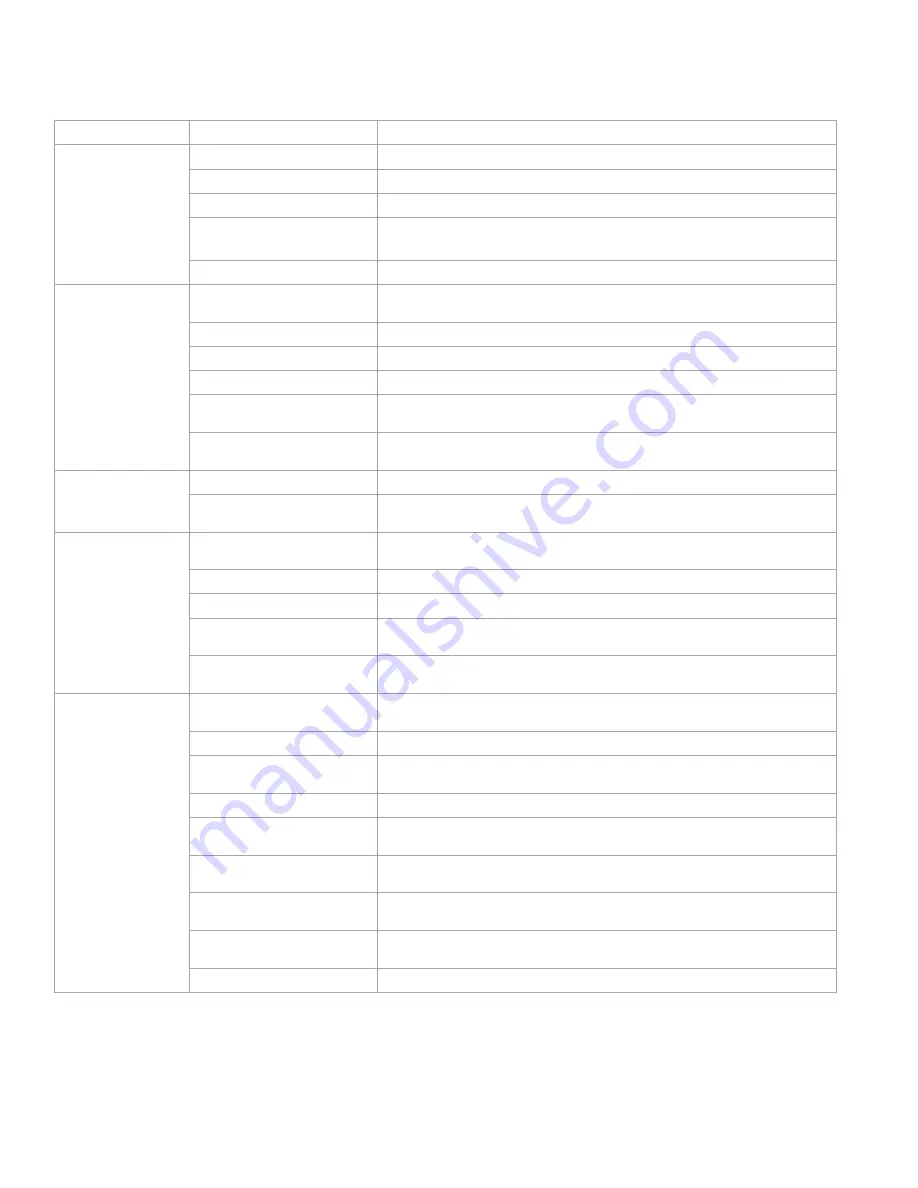
30
Symptom
Possible cause
Corrective action
Fan motor hums
and/or gets hot, but
operates at reduced
speed or not
at all
Incorrect power applied to unit. Apply correct power to unit.
Defective motor capacitor.
Replace with known good capacitor.
Defective fan motor.
Replace defective motor.
Blower wheel stuck in housing.
Reposition blower wheel for proper alignment in housing, or replace if
damaged.
Foreign object in blower wheel. Remove foreign object and replace blower wheel if damaged.
Fan operates but
vibrates
Blower wheel dirty.
Remove and clean blower wheel taking care not to remove or reposition
balance weights.
Blower wheel bent.
Replace blower wheel.
Blower wheel out of balance.
Replace blower wheel.
Foreign object in blower wheel. Remove foreign object and replace blower wheel, if damaged.
Loose motor mount screws.
Verify proper motor and blower wheel position, tighten motor mount and set
screws.
Broken motor mount frame or
mounting screws.
Replace motor or mounting screws.
Fan operates but
blower wheel rubs
housing
Bent blower wheel.
Replace blower wheel.
Blower wheel not positioned
properly on motor shaft.
Check for damage to blower wheel. Reposition blower wheel on motor shaft
or replace as required.
Fan operates but
air delivery is low
Incorrect fan speed has been
selected.
Re-select proper fan speed as required.
Dirty air filter.
Replace air filter.
Dirty coil.
Clean coil.
Obstruction in ductwork.
Check for improperly positioned balancing or fire dampers. Check for fallen
duct liner. Repair as required. Check that supply grilles are open.
Actual E.S.P. higher than
design.
Check installation for proper supply and/or return grilles, and compliance with
plans and specifications.
Fan operates but
no cooling/heating
(hydronic units)
No chilled/hot water flow in
system.
Establish chilled/hot water flow in system as designed.
Unit isolation valves closed.
Open unit isolation valves.
Debris in water piping blocking
flow.
Locate and clear debris from water piping as required.
Plugged strainer.
Clean or remove strainer screen as required.
Riser or main flushing loop
open.
Close flushing loop valve as required.
Loose or improper wiring from
thermostat to control valve.
Verify all wiring connections and terminations, and verify proper wiring of
thermostat.
Defective thermostat.
Momentarily jumper thermostat contacts to simulate proper operation.
Replace thermostat as required.
Defective control valve
actuator.
Manually place control valve in “open” position using lever on actuator
housing. Replace actuator as required.
Improper aquastat operation.
Verify proper aquastat position and operation. Replace as required.
Troubleshooting





































